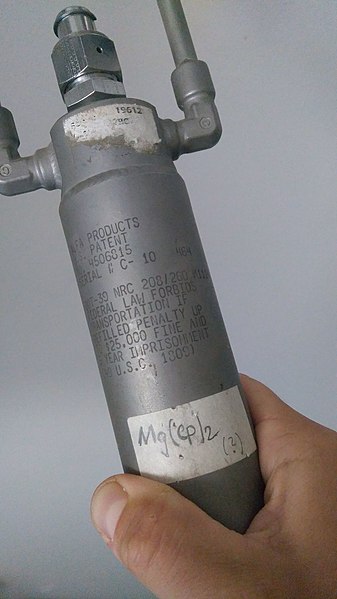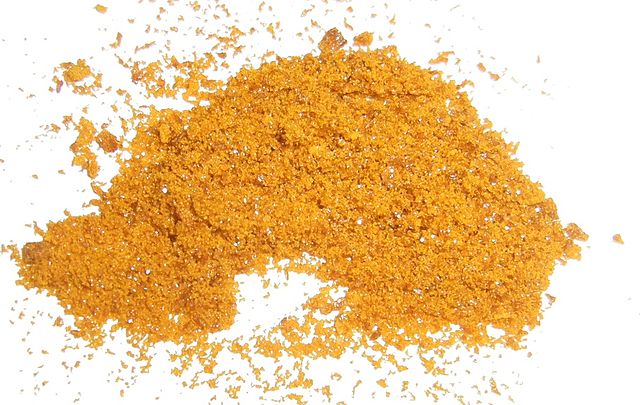Ferrocene is an organometallic compound with the formula Fe(C5H5)2. The molecule is a complex consisting of two cyclopentadienyl rings sandwiching a central iron atom. It is an orange solid with a camphor-like odor that sublimes above room temperature, and is soluble in most organic solvents. It is remarkable for its stability: it is unaffected by air, water, strong bases, and can be heated to 400 °C without decomposition. In oxidizing conditions it can reversibly react with strong acids to form the ferrocenium cation Fe(C5H5)+2. Ferrocene and the ferrocenium cation are sometimes abbreviated as Fc and Fc+ respectively.
Ferrocene
Crystals of ferrocene after purification by vacuum sublimation
Strands of an uncharged ferrocene-substituted polymer are tethered to a hydrophobic silica surface. Oxidation of the ferrocenyl groups produces a hydrophilic surface due to electrostatic attractions between the resulting charges and the polar solvent.
Image: Kealy and Pauson synthesis of ferrocene v 2
Organometallic chemistry is the study of organometallic compounds, chemical compounds containing at least one chemical bond between a carbon atom of an organic molecule and a metal, including alkali, alkaline earth, and transition metals, and sometimes broadened to include metalloids like boron, silicon, and selenium, as well. Aside from bonds to organyl fragments or molecules, bonds to 'inorganic' carbon, like carbon monoxide, cyanide, or carbide, are generally considered to be organometallic as well. Some related compounds such as transition metal hydrides and metal phosphine complexes are often included in discussions of organometallic compounds, though strictly speaking, they are not necessarily organometallic. The related but distinct term "metalorganic compound" refers to metal-containing compounds lacking direct metal-carbon bonds but which contain organic ligands. Metal β-diketonates, alkoxides, dialkylamides, and metal phosphine complexes are representative members of this class. The field of organometallic chemistry combines aspects of traditional inorganic and organic chemistry.

A steel bottle containing MgCp2 (magnesium bis-cyclopentadienyl), which, like several other organometallic compounds, is pyrophoric in air.
a single crystal of a Mn(II) complex, [BnMIm]4[MnBr4]Br2. Its bright green color originates from spin-forbidden d-d transitions






![a single crystal of a Mn(II) complex, [BnMIm]4[MnBr4]Br2. Its bright green color originates from spin-forbidden d-d transitions](https://upload.wikimedia.org/wikipedia/commons/thumb/9/96/Mn%28II%29_kompleksi_monokoristall.jpg/640px-Mn%28II%29_kompleksi_monokoristall.jpg)